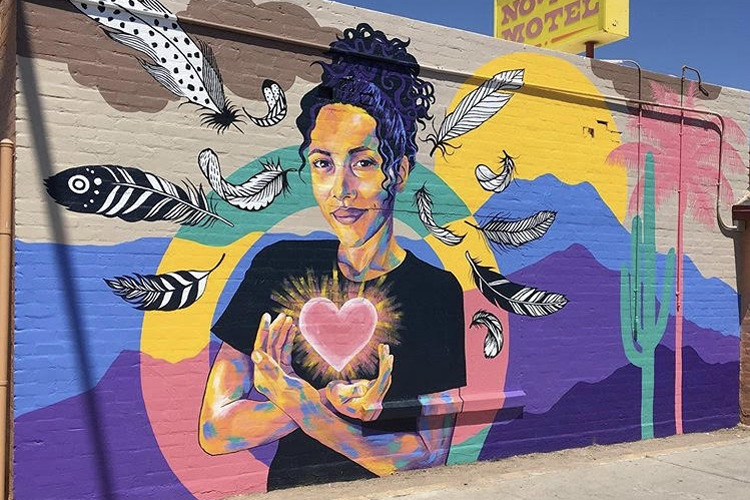Eye-catching murals are popping up on the once-bare walls of buildings across the country. Muralism, as it’s more formally called, has become a popular way for communities to improve their urban landscape. These murals quickly become regional landmarks that draw locals and tourists alike. They are welcoming and encourage exploration of an area, which leads to more energized communities and stronger businesses, especially retail establishments that depend on foot traffic.
Attracts tourists and locals

Tourism and murals go hand-in-hand, and Nashville is a prime example. Across the city’s landscape, murals have been thoughtfully placed to draw visitors into different areas. Many of these murals have become so popular they have become tourist attractions in their own right, with people willing to stand in line to have their picture taken in front of this public art.
The crowds who wait their turn for a photo are also the same people who help the surrounding businesses thrive, by spending on things like parking, meals and shopping. Overall, arts and culture generate $135 billion in economic activity, according to the U.S. Bureau of Economic Analysis.
Improves the urban landscape
Murals enrich a city’s landscape by adding personality and character. They invite conversation and make communities feel welcoming by creating a unique environment for locals and visitors. In fact, cities known for their public art typically draw more visitors. Americans for the Arts found that every dollar invested into nonprofit arts (such as murals) generates $6 in taxes.
Many neighborhoods are defined by their area’s murals. For example, The Nations in Nashville has a 200-foot tall mural painted on an abandoned silo by Australian artist Guido van Helton, which our commercial real estate, design and development company Southeast Venture commissioned. We also commissioned a massive mural on a parking deck that has become the unofficial welcoming sign to East Nashville, our city’s hipster enclave. The giant “EAST” painted on the side of the parking garage is clearly visible from downtown, as well as to the approximately 100,000 cars that drive by on the interstate that runs through downtown on the east side.
Boosts property values
Once locals and tourists frequent a mural and spend their money in the area, the building on which the mural is painted becomes more desirable, ultimately increasing its property value. A walking trail in Indianapolis is filled with public art that boosted the property values in the surrounding area by $1 billion, per Realtor.com.
Because murals offer so many benefits, several cities have established programs to encourage the creation of murals on commercial buildings, such as the Nashville Walls Project and Murals of Phoenix. Overall, murals can turn ordinary buildings into notable architecture with only a small up-front expenditure. It’s a win for everyone: locals and tourists, building owners and the community as a whole.
Wood Caldwell is a principal at Nashville-based commercial real estate firm Southeast Venture, and he has more than 30 years of experience in commercial real estate development and sales. Among his many responsibilities is overseeing site development activities on behalf of Southeast Venture’s clients, including management, marketing and sales.




